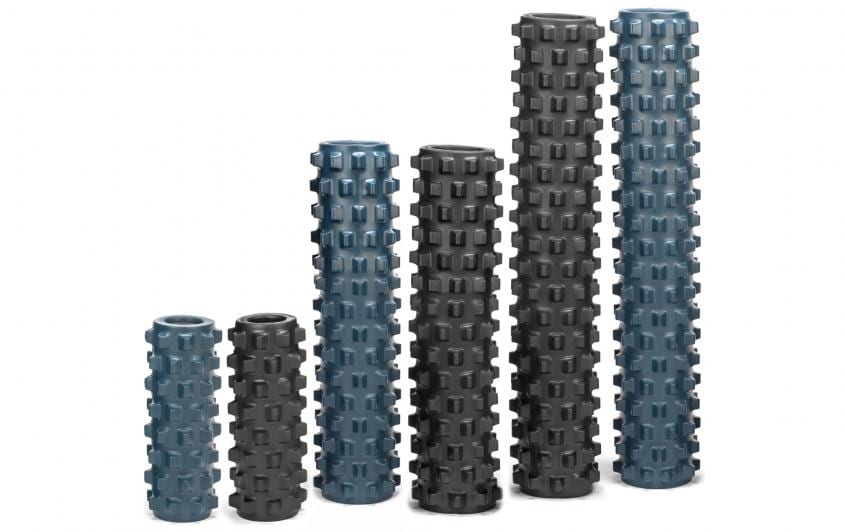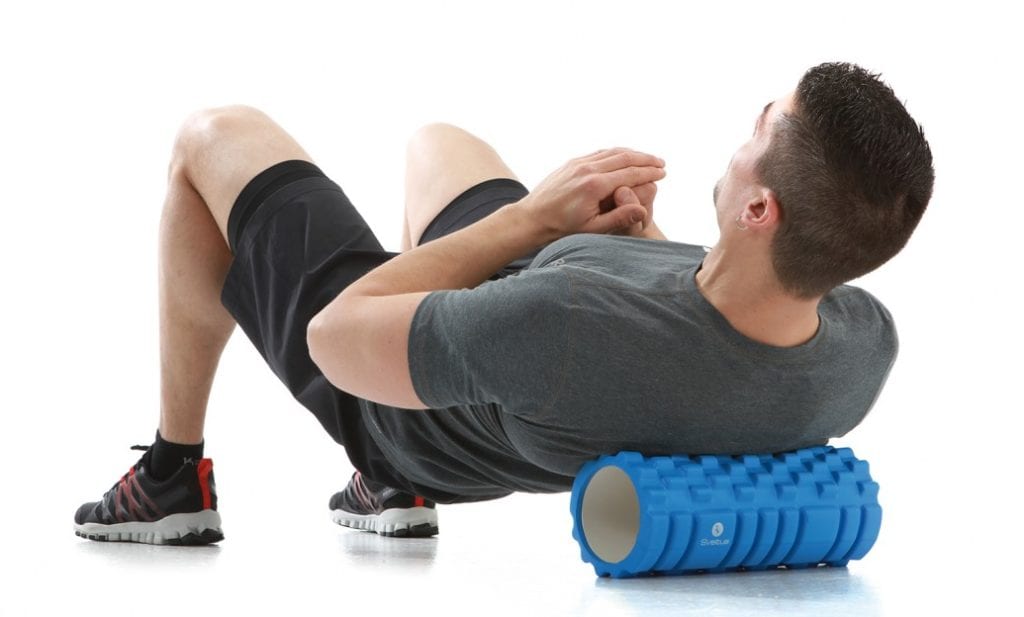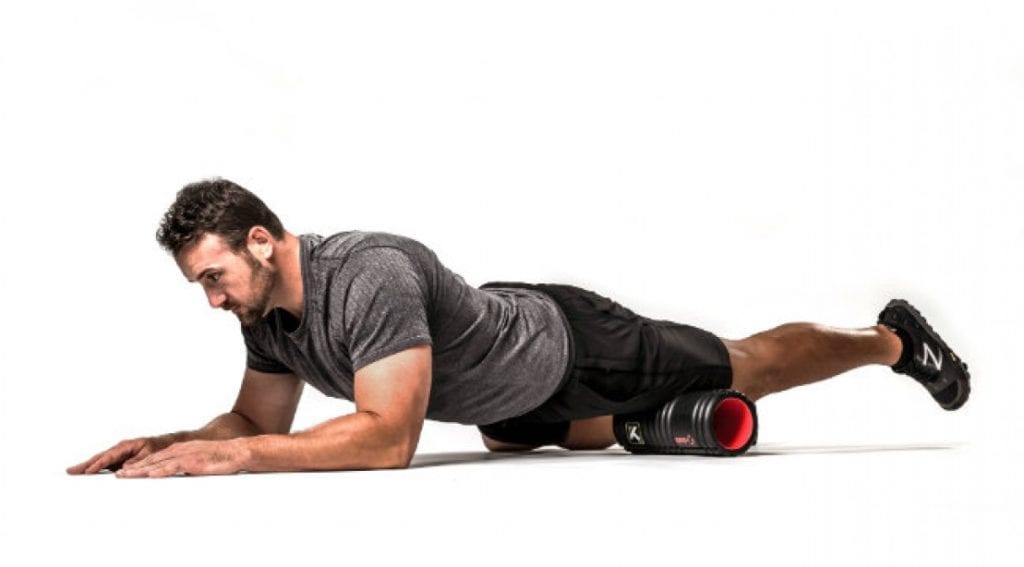8 Foam Rolling Exercises To Get You Out Of Pain
08/01/2020
Are you suffering from any of the following:
- Frequent Headaches
- Neck Pain
- Tight Muscles
- Back Pain
- Posture Issues
- Poor Mobility
- Muscle Imbalances
If you said YES to any of the above, then have you considered foam rolling?
Have you even heard of foam rolling?
If you said YES… Great!
BUT if you said NO, here’s a very brief summary of what foam rolling entails and how it can help you escape pain…
What is foam rolling?

In a nutshell, foam rolling is where you roll over and apply pressure to certain areas of the body, which are tight and causing you pain.
For example, if you have tightness in the front shoulders (from lots of computer work), then rolling over these tight muscles, while applying pressure, can help to alleviate tension and allow your tight and overused muscles to relax and heal.
Benefits of foam rolling:
There are lots of benefits to foam rolling, but the main ones are:
#1 Reduces muscle tightness
Lots of people suffer from a stiff lower back, neck, shoulders, glutes, etc. By applying pressure and rolling over these areas, it will iron out muscle knots and reduce pain.
#2 Ideal for a warm-up
Foam rolling can be a great way to prepare your body for a workout. Whether it’s weight training, running, circuits, or sports specific, spending 5-10 mins before a session will help you increase blood flow to particular muscles and elevate body temperature – This will reduce injury and, at the same time, prepare the body for physical exertion.
#3 Greater range of motion
If you want to improve mobility and flexibility, then foam rolling can help you to increase your muscles/body’s range of motion.
#4 improved posture
Lots of clients when they initially come to see me suffer from tight front shoulders. Tight front shoulders pull both the shoulders and head forward, and this leads to a hunch back posture. It also causes headaches and spinal issues.
What I do is get them to spend 2-3 mins on a foam roller, rolling out these tight areas (front shoulder mainly), then I’ll get them to hold a 60s chest stretch. Almost instantly, the pain either goes or is significantly reduced. Posture is also improved and will continue to improve with more practice.
Over time and combined with other exercises, the pain will often completely go, and posture will keep improving – providing the client keeps up with the practices.
8 Foam Rolling Exercises To Get You Out Of Pain
Above are eight exercises I frequently use with my one to one personal training clients.
You can do all of these eight exercises if you like, or you can choose a handful that are needed for your specific situation. For example, if you’re a regular runner, then the leg exercises are ideal. If you work at a computer desk, then the upper back and neck foam rolling drills are perfect.
#1 Back foam rolling
The first exercise is great for targeting the upper, mid, and lower back. Roll over each section of the back for 10-20 rolls, and repeat as many times as necessary until things start to ease up.
The lower back is usually particularly sensitive for most people. If it’s too painful, STOP. It’s normal to feel uncomfortable and a slight bit of pain (BUT not too much!). Over time slowly roll further and further down the back – BUT only when your body gets used to it (this usually takes 2-4 weeks).
#2 Lat foam rolling
The second exercise is excellent for freeing up tight lat muscles (muscles at the side of the upper back). Spend 30-60s doing each side.
#3 Neck Foam rolling
The third exercise focuses on freeing up the neck. Use the foam roller as a pillow and slowly turn your head side to side. 60s is usually enough to improve neck movement and reduce pain.
#4 Hamstring foam rolling
Fourth exercise. Lots of people suffer from tight hamstrings (the muscles that run down the back of the upper leg). Rolling out each hamstring for 60s will help iron out knots and improve hamstring mobility.
#5 Adductor foam rolling
Fifth exercise. WARNING – this one is particularly painful (enough to bring a grown man to tears!) — this is an excellent exercise for freeing up the muscles that run down the inside of the thigh.
#6 Glute foam rolling
Sixth exercise. Tight glutes are extremely common. I’d say 90% of my clients when they come to see me have tight glutes – This places stress on the lower back and often causes pain in unexpected areas of the body.
Tight and weak glutes will affect your standing posture, which can lead to lower back pain, headaches, muscle imbalances, etc. To prevent this, roll out each glute for 60s.
#7 IT band foam rolling
Seventh Exercise. Great for runners and anybody who uses their legs a lot (footballers, rugby players, bodybuilders, etc.). Roll out each side and do anything from 20-50 rolls on each leg.
#8 Thigh foam rolling
Eighth exercise. Similarly to the above (IT band) foam rolling the thighs is ideal for those of you who have tight quad muscles from using your leg muscles frequently.
When to foam roll?

When should you do foam rolling, and for how long?
That’s an excellent question BUT like most things…
It depends!
That said, here are some popular ways to incorporate foam rolling into your weekly routine:
Warm-up – use a foam roller for warming up before a session. I would recommend doing 3-5 mins light cardio beforehand to raise body temperature and then do 3-5 mins on the foam roller.
Cooldown – once your session is done, you could spend 5-10 mins foam rolling out the muscles you’ve just trained.
During Your Workout – if you need a break or have a long rest period in between sets, then you may want to use a foam roller in between. For example, a bodybuilder may have 3-5 minutes rest in between a set of squats – some bodybuilders will use that rest time to roll out their legs on a foam roller.
Recovery – sometimes, you need a break from working out – we all need a week off now and then! BUT instead of doing nothing, you could spend time doing recovery training. Some times when my body is really beaten up, I’ll take a week off training and do foam rolling for 30-40 minutes every day. It’s fantastic for speeding up recovery when your body is fatigued and overtrained!
What foam roller to buy?
The best foam roller, in my opinion, is the rumble roller – https://www.rogueeurope.eu/rumble-roller-eu
Thanks for reading,

Nick Screeton (Founder Of LEP Fitness)